How one animal shelter director made big changes to save pets’ lives

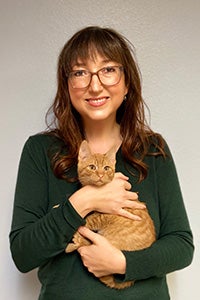 Sarah Hock was a bit overwhelmed. In April of 2019, she moved from Phoenix, Arizona (where she had worked 15 years in a variety of animal welfare roles), to Olympia, Washington, to become the executive director of Joint Animal Services.
Sarah Hock was a bit overwhelmed. In April of 2019, she moved from Phoenix, Arizona (where she had worked 15 years in a variety of animal welfare roles), to Olympia, Washington, to become the executive director of Joint Animal Services.
The shelter, which serves an 800-mile radius and takes in 5,000 pets a year, was operating under the same challenges that face many municipal facilities: budgetary constraints and outdated protocols.
“Joint Animal Services had made some positive changes a year or two before, but to a certain extent, was still trapped in this-is-how-we’ve-always-done-it mode,” Sarah says. “I was hired to re-envision what we could be doing in the community and how to move forward.”
Some of those prospective changes included updating old software programs and job descriptions, as well as assessing what could be done to increase lifesaving.
“Everyone wanted to be a no-kill shelter, but we needed a catalyst to move it along,” she says. “There was no way for us to define gaps, since we were operating on outdated shelter management systems. Plus, a lot of people were overworked and burned out, so it just made the prospect that much more daunting.”
Personally, Sarah was also struggling with adapting to her new community.
“I moved halfway across the country to a place where I didn’t know a soul,” she explained. “There are some days when tough decisions have to be made and there are challenges to overcome. That just made it really hard.”
New program, new beginning
Thankfully, Joint Animal Services is a partner in the Best Friends Network, which means that Sarah had an ally in Kaylee Hawkins, the Pacific region director for Best Friends. It was during their first phone meeting that Kaylee made a suggestion that would change Sarah’s trajectory.
Best Friends was launching the inaugural Executive Leadership Certification (ELC) program in conjunction with Southern Utah University. The six-month program guides participants through the creation of an action plan based on data analysis, professional development and a lifesaving business plan.
“I understood the vision for our ELC program, and it was tailor-made for animal welfare leaders like Sarah, so I was eager to see if we could lend her this support so early into her tenure,” Kaylee says. Sarah applied and as fate would have it, secured the last available spot.
About our nationwide goal of no-kill by 2025
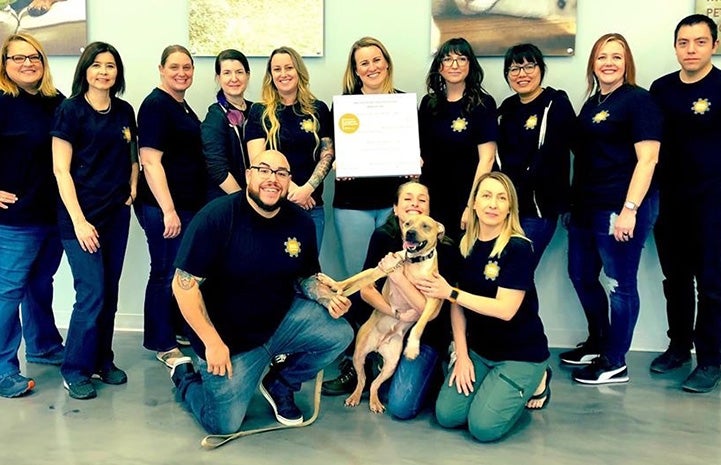
Animal shelter leaders find support and inspiration
In addition to creating business plans, the Executive Leadership Certification program includes several workshops across the country and regularly scheduled phone calls with its participants.
Sarah says the other participants in the program were there for her when she needed help, and she learned that many of them had experienced the same issues she was dealing with. “It’s nice to know you’re not alone while trying to move an organization forward. It’s just been amazing to have them there to bounce ideas off of.”
That level of support was a key factor in creating the program, according to Tawny Hammond, director of national no-kill advancement at Best Friends. “The ELC offers directors like Sarah a strong foundation with a community of executive leaders that she could turn to for advice and guidance. The purpose of the program is to give leadership the tools, resources and training to tackle the complex issues that they face daily.”
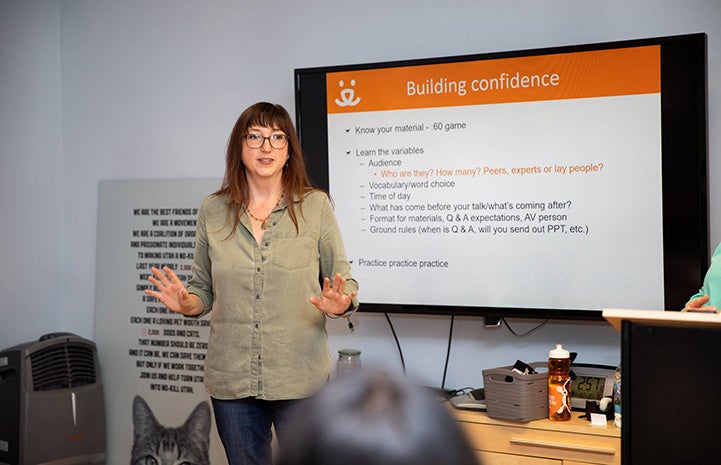
Innovative strategies = more lives saved
Inspired and motivated, Sarah began tackling some of the larger challenges at Joint Animal Services. While the shelter had increased adoptions through transports to other parts of the country, she wanted to encourage lifesaving opportunities in her own community. She started by creating a medical and behavior waiver policy for pets who previously would have been euthanized if not transferred (such as those with bite histories or medical needs).
For example, a Chihuahua named Irene (due to stress and fear) was biting people when they reached into her kennel. Previously, the shelter would have euthanized her, placed heavy restrictions on her adoption or only made her available for rescue.
Instead, Sarah brought the little dog into the office area to decompress. Slowly but surely, Irene grew more calm and friendly, and even allowed staff to pet her. “She actually started liking people,” Sarah says. “One day, my son came in and Irene crawled all over him, trying to get his attention.”
After posting a cute photo and a clever but honest bio on the JAS Facebook page, a father and his daughter came all the way from Tacoma to meet Irene. The daughter took Irene for a walk — a bonding moment that sealed the deal.
“They left with Irene and she’s still with them to this day,” Sarah says. “This was the literal opposite of who we would have sent her home with before. It’s really about having a conversation with people on what to expect and then see if they want to take a chance on the pet.”
Sarah says the shelter also adopted out several German shepherds needing surgery for hip dysplasia. “People were absolutely willing to take on that expense. They want to support their local shelter and we’re giving them the opportunity now.”
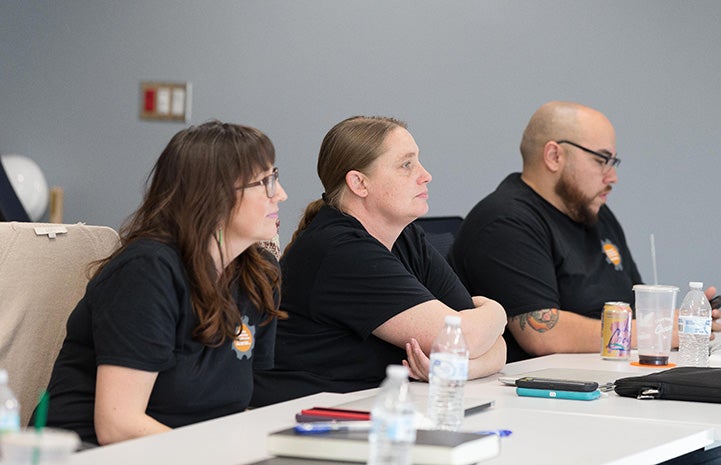
The road to no-kill
By making just that one change, JAS is now saving at least 50% more pets than the previous year, which translates to an increase of more than 500 pets finding homes.
“Adoptions haven’t been that high in almost seven years. When I told the staff, they got huge smiles across their faces,” Sarah says.
The shelter is ready for a number of next steps: bringing on an in-house veterinarian and staff, creating a surgical suite, closing the night drop box, instituting a coordinated entry process, providing counseling and resources that could prevent pets from being surrendered, and implementing a robust community cat program.
“The business plan we worked on at the ELC is really going to be a guiding light for 2020-21,” Sarah says. “I can’t say enough about the program. It was a very powerful experience.”
The feeling is mutual for Tawny, who says she has had nothing but accolades for this member of her first graduating class: “Sarah has impressed me with her tenacity and vision. She is focusing on the essentials of her organization so that she has a firm foundation to build on. Our goal is to get as many directors and deputies or assistant directors through the program as fast as we can in order to reach the no-kill 2025 goal.”
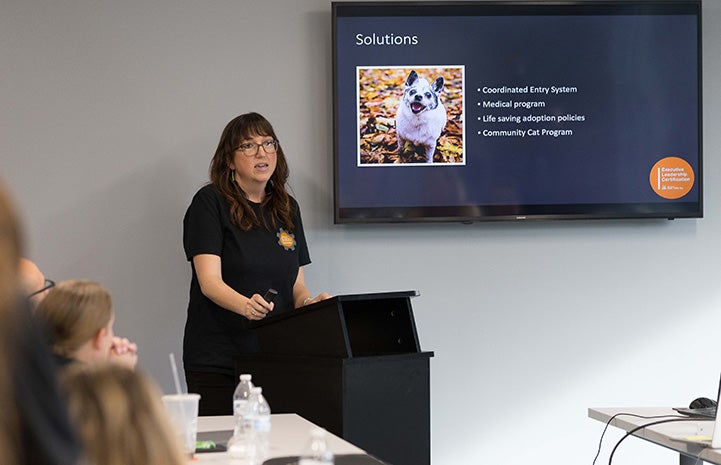
Photos courtesy of Joint Animal Services and by Best Friends staff